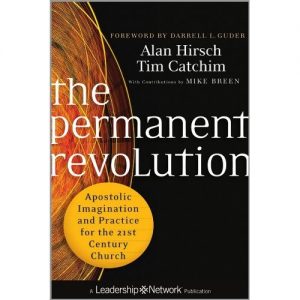Alan Hirsch serves as founding director of Forge Mission Training Network, and co-leads Future Travelers, an innovative learning program helping megachurches become missional movements. A thought leader in the missional church movement, he is an associate professor at Wheaton College and an adjunct professor at Fuller Seminary and George Fox Seminary. His books include ReJesus: A Wild Messiah for a Missional Church (2009, co-authored with Michael Frost – read my review here) and The Forgotten Ways: Reactivating the Missional Church (2009).
Tim Catchim is the founder and director of Generate, a coaching and consultant agency for apostolic ventures. Additionally, he owns Recycle Clarksville, a curb side pick up service for Clarksville, TN. He is an experienced blogger and former parish pastor who has never previously written a book.
Book Basics
Hirsch and Catchim succeed in writing “mainly a work of theological (re)imagination and (re)construction” constructed with wisdom from many disciplines (xxi) by naming the prevailing model, acknowledging infrequently and inadequately it has been challenged over the centuries, and providing an alternative that is constructed with a biblical foundation. Christianity was never intended to be institutionalized, but rather to exist as a permanent revolution. To enable this seemingly impossible task the church must be guided by the wisdom of APEST ministries (Apostle, Prophet, Evangelist, Shepherd/Pastor, Teacher) as found in Ephesians 4:1-16.
The APEST model is far more than a pest to those living happily within the prevailing model’s overemphasis or sole reliance on ST. Restoring the APE ministries alongside the ST would change what it means to be church and therefore require significant shifts in how ministry, leadership and organization are understood. The APEST model also lessens or eliminates the false lay-clergy dichotomy present in the ST model by restoring the priesthood of all believers by welcoming each person’s APEST gifting.
So What?
The church is in the midst of a significant shift. Diana Butler Bass’ Christianity After Religion (2012 – read my review here) provides the most helpful appraisal of what has changed in recent years. Currently many leaders, movements, denominations are articulating differing visions of the preferred path into the future. How does the restoration of APEST ministry compliment or conflict with your vision of the future church?
Alan Hirsch and Tim Catchim. The Permanent Revolution: Apostolic Imagination and Practice for the 21st Century (Jossey-Bass, 2012). ISBN: 9780470907740.
